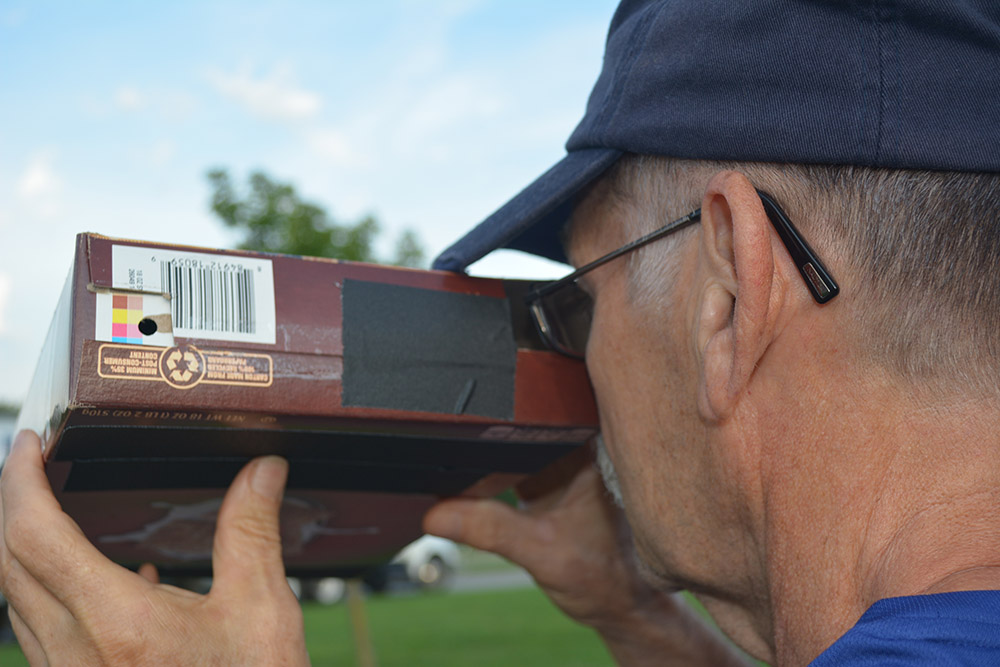
LATHROP, Missouri—At 1:07 p.m. CDT, daylight succumbed to deep twilight, birds flocked to trees to roost, crickets began their evening song and all of us gathered at Ed Crowley’s hay and cattle farm to witness a 360-degree sunset.
After nearly 90 minutes of heavy rain, the clouds mercifully parted, somewhat, in time for Crowley’s family, friends and coworkers at Platte-Clay Electric Cooperative to take in the Aug. 21 eclipse.
Imagine the few seconds it takes for a dimmer switch to darken a room and you get the idea of a moon casting its shadow across the landscape. Wait a bit—or, in our case, two minutes of darkness—and then, gradually, lightness reappears.
And while a few of us—including my children, Catherine and Jonathan—caught a precious few seconds of totality before the clouds obscured the sun again, the spectacle of darkness flabbergasted us.
Aaron Wood, a PCEC line foreman and Crowley’s son-in-law, took the day off work to share the event with his father-in-law and extended family.
“I don’t hunt, so I take my vacation days in the summer,” Wood said during a spell of stubborn, heavy rain.
And if the cloud cover is too thick to view the eclipse? “Well, we’ll still get total darkness,” said Wood.
Elsewhere, Platte-Clay loaned a bucket truck so video crews from the Smithsonian Institution’s National Air and Space Museum could produce a live webcast of “Stem in 30,” a weekly program for middle schoolers.
Good cheer prevailed over the day’s festivities. Fireworks exploded in a nearby town. Pink Floyd’s “The Dark Side of the Moon” playing on someone’s phone wafted over us. “Kids, it’s time for bed,” one of the partygoers said in jest to the several toddlers running afoot as twilight appeared.
Relief also prevailed.
After a 50-minute rain delay, Joplin engineering consultants John Riediger and Jack Dickens launched a weather balloon outfitted with four cameras, trackers and a ham radio. Their goal was to send the helium-filled balloon skyward to 120,000 feet to capture eclipse videos and photos.
The mission was tricky because the engineers’ tank had a limited supply of helium, and they had to augment the pressure inside the rain-drenched balloon. And they were racing against the totality clock. “We only have two hours to reach full altitude,” said Riediger.
Luckily for the engineers and solar and lunar enthusiasts, the balloon achieved liftoff at about 11:50 a.m. and soared to 48,000 feet about 40 minutes later. Shortly before we left at 2:30, the balloon had landed in Meadville, about 70 miles away.
Crowley was happy with the party’s turnout.
“I wasn’t going to do anything for the eclipse, but then my family said, ‘We’re coming to visit.’ ”
So did his co-op family, including PCEC’s Harold Baker, chief technician, and Susan Wood, payroll/benefits administrator at NW Electric Power Co-op, the co-op’s power supplier in Cameron.
“I wish I could do a replay,” said Crowley.
So do my children and I. Until then, we’ll wait for the nation’s next solar eclipse, April 8, 2024.
Victoria A. Rocha is a staff writer at NRECA.